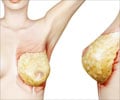
Nasal obstruction is usually caused by a deviated septum (a condition in which the partition between the two sides of the nose is off-center or crooked, making breathing difficult), or by enlarged tissues (turbinates) within the nose. Two surgical procedures commonly performed by otolaryngologists are septoplasty (an operation to correct the deformity in the septum) and turbinate surgery.
"With the availability of powerful bioengineering computer-aided design software, anatomically accurate three-dimensional (3D) computational models can now be generated from computed tomography (CT) or magnetic resonance imaging (MRI) data," Dr. Rhee explained. "Computational fluid dynamics (CFD) software can be used to analyze these models and calculate various anatomic and physiologic measures including nasal airflow, resistance, air conditioning, and wall shear stress."
The researchers evaluated whether virtual surgery performed on three-dimensional nasal airway models can predict post-surgical parameters obtained by computational fluid dynamics. The researchers used pre- and post-surgery CT scans of a patient undergoing septoplasty and right inferior turbinate reduction (ITR) to generate 3D models of the nasal airway.
"Overall, the virtual surgery results are promising and demonstrate the potential of CFD techniques to predict post-surgical outcomes," the researchers report.
Advertisement








